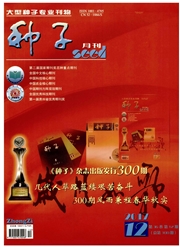

 中文摘要:
中文摘要:
探讨了鹿科6属动物主要组织相容性复合体dra(mhc-dra)第二外显子的变异特点,揭示其分子水平上的进化选择模式,并与cyt b进行了比较。采用测序法,获得鹿科6属动物dra第二外显子246 bp的序列。研究结果表明,多态性位点数18个,独立变异位点13个。mhc-dra第二外显子显示出较低的核苷酸变异,且6属有各自独特的变异位点。氨基酸序列中抗原结合位点共计20个。其中,鹿科6属动物的氨基酸位点63,驼鹿属氨基酸位点18,是不同于马属和人属的抗原结合位点,推测鹿科动物可能有着不同的抗原结合模式。根据非同义替代率(Ka)和同义替代率(Ks)比值的计算结果,表明鹿属mhc-dra第二外显子为正向选择,其余5属均为纯化选择。对mhcdra第二外显子及cyt b分别运用邻接法(NJ),最大似然法(ML)和贝叶斯推论(BI)进行系统发育重建得到相似结果,形成了旧世界鹿类与新世界鹿类的姐妹类群。麂亚科cyt b和mhc-dra第二外显子的基因型可能是鹿亚科与其它亚科之间的过渡型,而气候变化和环境变迁可能是推动mhc-dra第二外显子分化的潜在原因。
 英文摘要:
英文摘要:
In this study,the variation characteristics and revealed evolutionary selection mode at the molecular level of the major histocompatibility complex dra( mhc-dra) exon 2 in the six deer genera of family Cervidae were investigated and compared with cyt b gene.246 bp of mhc-dra exon 2 sequences of six deer genera in family Cervidae were obtained based on sequencing method. The results showed that there were 18 polymorphic sites and 13 singleton variable sites. The nucleotide variations of mhc-dra exon 2 were low and each genus had its own unique variation loci. There were 20 putative antigen-binding sites in this region,in which position 63 and 18 were different from genus Equus and Homo,which suggested the six deer genera might have different antigen-binding model. According to the ratio of non-synonymous substitution rates( Ka) and synonymous substitution rates( Ks),the mhc-dra exon 2 is positive selection for Cervus,and is purifying selection for the other five genera. The Neighbor-joining method( NJ),Maximum likelihood method( ML) and Bayesion inference( BI) of the mhc-dra exon 2 and cyt b were in a similar result,and all formed sister groups between the old world deer and the new one. The gene type of cyt b and mhc-dra exon 2 clearly showed subfamily Muntiacinae is a transition group between subfamily Cervinae and other subfamilies. Climate and environmental changes might be potential reasons to promote the differentiation of mhc-dra exon 2.
 同期刊论文项目
同期刊论文项目
 同项目期刊论文
同项目期刊论文
 期刊信息
期刊信息
